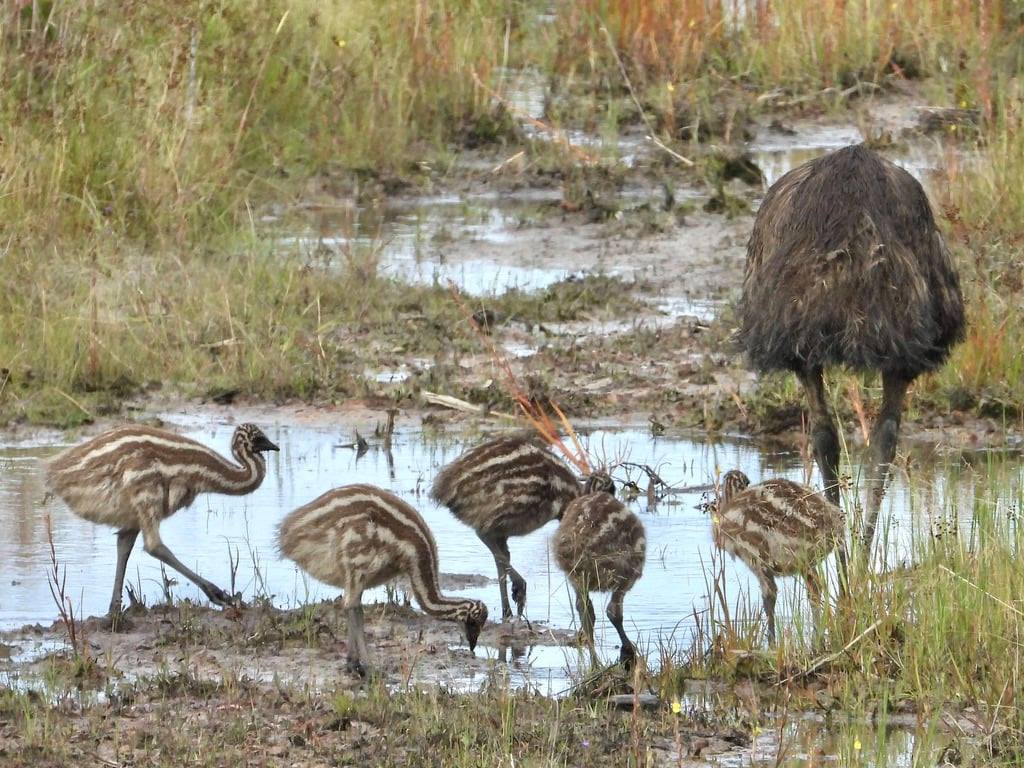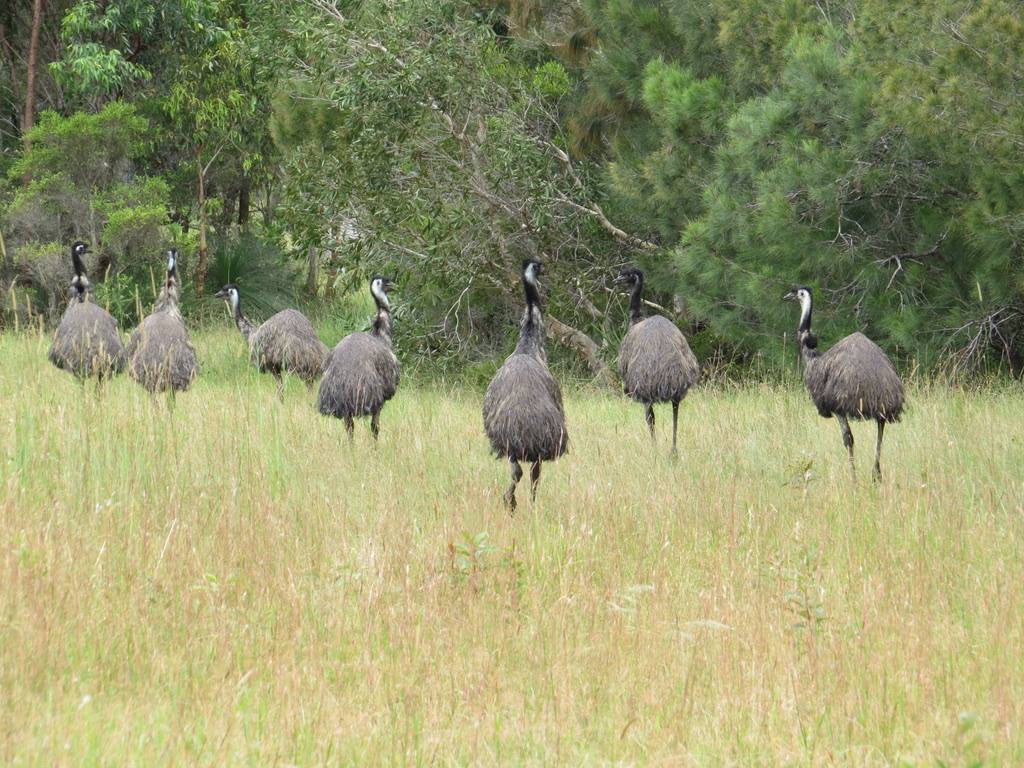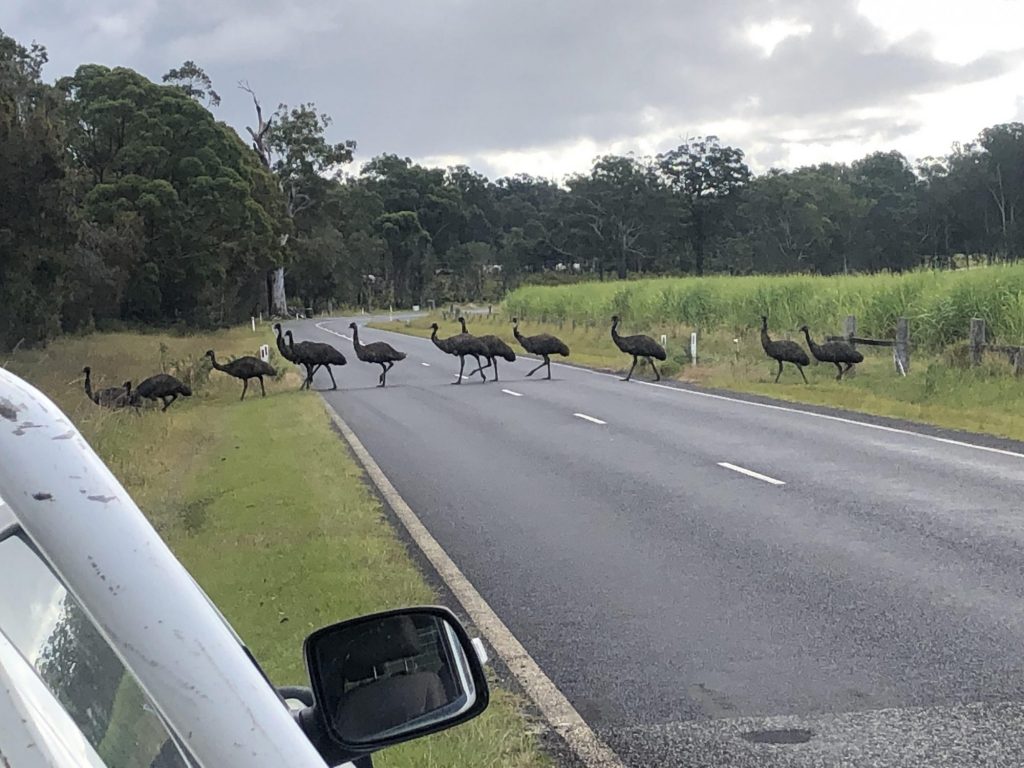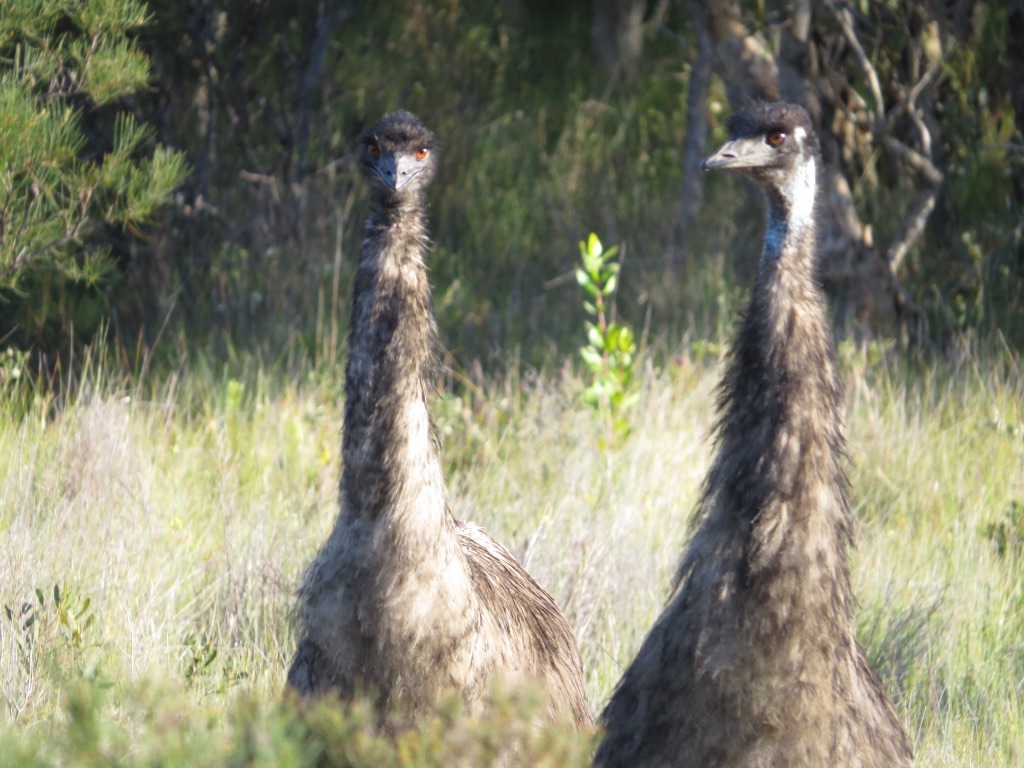Trail of Coastal Emus Growing Faint
While humans on the NSW North Coast enjoy an enviable lifestyle, we also live with the consequences of negative impacts on our wildlife. Expansion of cities, towns, roads and more has accelerated across the generations, with very few attempts to press our foot on the brake when native animals appear in the path of progress. We see the direct effects on many species as their bodies line the roads that were built by felling and digging up the homes of others. And this relentless push into new areas has driven one small group to the point of extinction.

Dwindling Numbers
There is every chance the coastal emu – cut off from its more numerous relatives across the Great Dividing Range – never had a huge population, although early Europeans recorded them as being plentiful along the coast before going into rapid decline during the next century. Numbers are now so small they are difficult to count or estimate.
The sparse remaining groups live in areas between Diggers Camp, near Wooli on the Clarence Coast, in the south and Bungawalbin, near the Richmond River, in the north and bounded by the Clarence River to the west. According to the Coastal Emus: Sighting Data Analysis, released in July 2020, there could have been as few as 26 adult birds remaining, with a slightly smaller number of juveniles, although the scarcity of the animals and difficulty accessing their home range make getting an accurate count problematic.

Hotspot for Sightings
It wasn’t too long ago coastal emus were sighted on the Coffs Coast, with a few birds regularly seen between Red Rock and Corindi. Locals say, however, that after a male was killed by dogs about 2005, the remaining emus seemed to leave the area.
With their range contracting, the Coastal Emu Register organised by Clarence Valley Council has been established so people can record when and where the birds are seen. The hotspot for sightings is along Brooms Head Road between Maclean and the coast, with more than 200 seen there in the past two years, although this number will include multiple sightings of the same animals.
This was where Nicky Priest spotted the remarkable sight of a dozen of the emus crossing on May 20 this year.

Threats to Survival
Proximity to vehicles is, however, one of the biggest threats to their survival.
“Vehicle strike continues to be a threat to coastal emus throughout their range,” Coastal Emus: Sighting Data Analysis states. Most recently, a male nurturing five chicks was killed after being hit by a vehicle on Brooms Head Road on February 19 this year.
“NPWS data shows that 74 endangered coastal emus were killed by vehicles since the start of 2000.
“A study into the frequency and causes of emu-vehicle collisions in the Clarence Valley by Sinclair Knight Merz (2018) found that there is a higher incidence of vehicle strike on roads when the road is within 40 metres of a waterbody, is adjacent to forested areas rather than cleared paddocks, has vegetation greater than two metres high within 10 metres of the road edge, when the roadside is unfenced, or when the fence is within 5 metres from the road edge.
“This suggests that emus are moving through the landscape and crossing roads for food and water resources, but unable to cross with ease when fences are present. When crossing a road, a coastal emu is more likely to be struck by a vehicle when visibility at the road edge is poor or a fence close to the road edge prevents the emu from leaving the road efficiently when a vehicle is approaching.”
Other threats to the coastal emu’s survival are pigs, wild dogs and foxes preying on eggs and chicks, habitat loss and degradation of ecosystems.

How You Can Help Coastal Emus
- Take care when driving through areas of known habitat to avoid collision with birds and use signage to notify drivers of the presence and risk of harm to emus.
- Control feral predators and restrain domestic dogs.
- Protect known and potential habitat from frequent fires and protect nesting birds from fire.
- Protect areas of known and potential habitat from clearing or development.
- Report records of emus, especially nesting birds or chicks to the Office of Environment and Heritage (OEH) as well as on the Coastal Emu Register.
- Report illegal killing of emus to the OEH.


